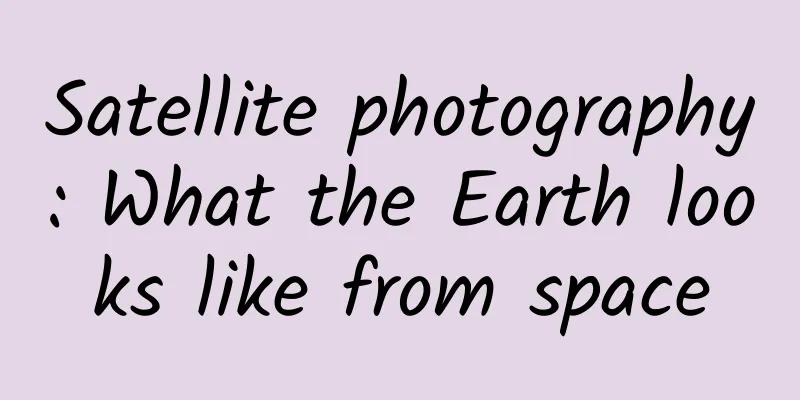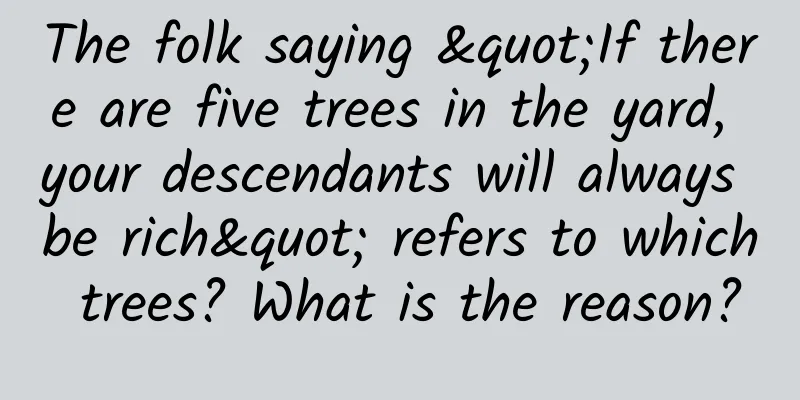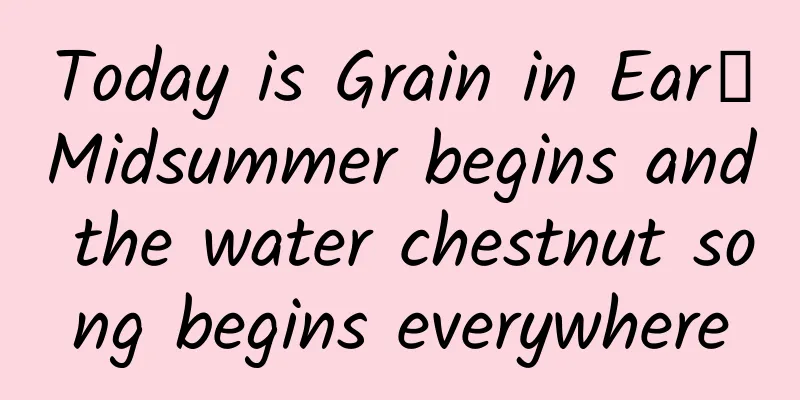Satellite photography: What the Earth looks like from space

|
How about renting or buying a satellite to take photos? Maybe you will say that you have watched too many whimsical science fiction movies! But I would say that the future is science fiction before it becomes reality. Just like more than 10 years ago, you could not imagine that you could use drones to create pictures with unique perspectives. ▲ Satellite composite image, with a viewing angle of 200 kilometers. The location is in Wuqia County, where the western edge of the Tarim Basin meets the Western Tianshan Mountains. The red is the landform formed by the seasonal erosion of Mesozoic red rock layers, and the black tree branches are the water marks left by the erosion of the earth. Photography/Satellite We who live on Earth are always controlled by the Earth's gravity and are trapped on the Earth's surface. The human high jump record is 2.45 meters, which was set by Cuban athlete Javier Sotomayor in 1993. With the help of poles, we can jump up to 6.20 meters. This world record was set by Swedish star Duplantis on March 21, 2022. This is the limit of human beings to escape the gravity of the earth. ▲ Satellite composite image, with a viewing angle of 180 kilometers. The location is in Wuqia County, where the western edge of the Tarim Basin meets the Western Tianshan Mountains. The red in the upper part of the image is the landform formed by the seasonal erosion of Mesozoic red rock layers, and the black in the lower part is the radial gullies on the mountain. In order to fly into the sky, the ancients made many attempts. The Chinese invented paper kites and Kongming lanterns, the ancient Greeks invented mechanical pigeons, and some people even thought of tying themselves to giant kites or rockets made of firecrackers. In the latest hit TV series "The Wind Rises in Longxi", Baidi Chen Gong restored the bamboo magpie invented by Lu Ban, which is as creative as wing suit gliding. In the 18th century, the French invented hot air balloons and airships. More than a hundred years later, in 1903, the Wright brothers of the United States finally invented the airplane. ▲ Satellite composite image. The location is located in the northern edge of the Junggar Basin. It is a tree-like gully left by seasonal water flow (there is also instantaneous rainfall in the desert area) washing the earth. But humans are still in the atmosphere, and all flights are based on aerodynamic principles. Humans have never really escaped the earth's gravity. It was not until the advent of rockets that humans finally gained the speed to escape the earth's gravity. Using this speed, we have artificial satellites. Humans suddenly discovered that we can extend our eyes, ears, and human perception into space, and we can finally jump out of the earth and see the earth. Artificial satellites are widely used in different fields such as military, science and technology, and communications, and have become a part of our lives. Currently, there are more than 6,000 artificial satellites in the sky above the earth. ▲ Satellite composite image, with a viewing angle of 180 kilometers. The location is located on the western edge of the Junggar Basin. The red color is the landform formed by the Mesozoic red rock layer under the erosion of seasonal water. Using satellites to obtain images is not just a fantasy of photographers. Scientists have been doing this for a long time. Now, satellite images are widely used, especially in resource and environmental surveys and research. We often use them as basic maps to compile various thematic maps. They are rich in information, intuitive, geographically accurate, and meet the positioning and measurement accuracy of geoscientific analysis, which are incomparable to other ordinary line maps. ▲ Satellite composite image, with a viewing angle of 180 kilometers. The location is located on the western edge of the Junggar Basin. The red color is the landform formed by the Mesozoic red rock layer under the erosion of seasonal water. The emergence of Google Earth has brought the application of satellite photography to a new level. This virtual earth software developed by Google arranges satellite photos, aerial photography and GIS on a three-dimensional model of the earth. As soon as it was launched, it was rated as one of the world's 100 best new products in 2005 by PC World Magazine. Users can browse high-definition satellite images from all over the world through the software, which is really addictive. ▲ Satellite composite image. The location is located at the northern edge of the Junggar Basin. The red color is the trace left by the residual muddy red layer eroded by seasonal water flow. The emergence of satellite maps has helped geography enthusiasts find a soulmate, and from then on, they can make a lot of new geographical discoveries without leaving their homes. For example, the Hanzhong Tiankeng Group and Pingshan Danxia are all new geographical discoveries brought about by satellite maps. However, although satellite photography is widely used, few people pay attention to or think about the unique perspective it brings in art. In January 2022, I used Aowei Maps and Mapbox satellite to observe the intersection of Ali Senge Zangbo and Gar Zangbo. I found that the black-toned streams and the brown-toned clusters of plants, the yellow-brown rocks, and the gray-white sandbars were coordinated with each other on the satellite map. It was like a master of Chinese painting, sometimes with a long straight brush, sometimes with a cone-like sand painting, and sometimes with a trembling brush. A Chinese landscape painting emerged in his hooks, textures, dots, and dyes, with appropriate shades, virtuality, and density. ▲ Satellite composite image. The location is located at the northern edge of the Junggar Basin. The red color is the trace left by the seasonal water flow eroding the residual muddy red layer, and the black tone is the clustered plants in the desert. This unexpected discovery made me very excited, and later I moved the image to the western edge of the Tarim Basin. This is the last place where the history of the ocean ended in mainland China. Various sedimentary rocks were formed in the Cenozoic Era, and they showed different colors due to different sedimentary environments. The erosion of seasonal water and perennial directional winds left ridges, earth forests, and colorful hills of various shapes and colors on the earth. The traces of water erosion and the fragmented residual rock layers were captured by the satellite one by one and presented beautifully in front of the computer. ▲The red beds where the Kunlun Mountains and the Tianshan Mountains meet on the western edge of the Tarim Basin. Image/Satellite I then kept trying to adjust the viewing angle and rotation angle of the satellite map, and intentionally looked for different combinations of color blocks and lines, and then saved these images through the screenshot function, and then used them as illustrations for the article. Before, I would also insert satellite images in the article, the purpose of doing so was to illustrate the spatial relationship of the landforms written and the characteristics from a bird's eye view. But this time it was different. I put it in purely because it is beautiful, the beauty of the landforms presented from a satellite perspective. I jokingly called these pictures "photos that even the best photographers can't take". After the article and WeChat Moments were posted, many friends watched and marveled at them. Editors from China National Geographic and Earth magazine contacted me on WeChat almost at the same time. They were all amazed by the photos and asked me how I got them? What geographical phenomena did they reflect? Could I do a special feature? I realized that satellites might be the best photographers. Their unparalleled height and all-weather coverage leave us with unlimited creative space. ▲Traces left by seasonal water flow on the western edge of the Tarim Basin. Image/Satellite So, will ordinary people be able to use satellite photography in the future? As the photographer and writer Zhao Chunjiang said, "Photographers in the future should be named after their equipment, such as Leica photographers and Seagull photographers." Will there be satellite photographers in the future? In the future, ordinary people will have several ways to use satellite photography. Method 1: Use satellite map software such as Google Earth. Of course, with the development of technology, the accuracy of satellite images will become higher and higher, and the new ones will be faster and faster. The browsing software will become more advanced and easy to use, and add functions to meet the needs of satellite photography, or launch professional software dedicated to satellite photography. Photographers sit in the studio, drink coffee comfortably, find the creative point on the computer, rotate, adjust the viewing angle, and then compose, screenshot, and adjust the color. ▲Traces left by seasonal water flow on the western edge of the Tarim Basin. Image/Satellite Method 2: Rent or buy a photography satellite. Also sit in front of the computer in the studio, drink coffee comfortably, use special software to change the satellite's orbit to the pre-applied orbit, and then take pictures at the right time. Maybe you will ask, is this possible? Can you afford a satellite? Nowadays, it is not uncommon for private individuals to own satellites in the West. On February 2, 2018, my country's first private satellite, Fengma Niu No. 1, was launched into space on a Long March 2D rocket. The initiator of the satellite, Feng Lun, a real estate businessman and chairman of Yufeng Capital, spent 5 million to become the first Chinese to own a private satellite. ▲The northern edge of the Junggar Basin, traces of seasonal water in the desert. Image/satellite hybrid image, viewing altitude 600-50 km As early as 2015, Elon Musk, the American madman and the world's richest man, announced SpaceX's plan to launch about 12,000 communication satellites into orbit, of which 1,584 will be deployed in low-Earth orbit 550 kilometers above the Earth. The project is named "Starlink", but according to relevant documents, the company is also preparing to add 30,000 more satellites, bringing the total number of satellites to about 42,000. It feels like Musk's satellite launch is like throwing beans in space. Moreover, the cost of launching a satellite is not as high as people imagine. Currently, the launch cost of one kilogram is about $5,000, and it will be even lower in the future. Nowadays, many photographers have equipment worth hundreds of thousands of dollars, so it is not difficult to spend hundreds of thousands of dollars to buy a photography satellite. Satellite photography, are you ready? ▲In the northern part of the Junggar Basin, seasonal water flows scour the Mesozoic and Cenozoic red rock layers left in the basin, and the tree-like lines are gullies left by the water. Image/satellite hybrid image, viewing angle 2000-8000 meters. Picture 1: Red flowers ▲In the northern part of the Junggar Basin in Xinjiang, the red rock layers remaining in the basin are washed away by seasonal water flow, presenting shapes and colors combined with tree-like gullies, forming an image like red flowers. Image/satellite hybrid image, viewing angle height 2000-8000 meters. Picture 2: Ink and Color Painting ▲The traces left by seasonal water erosion in the desert in the northern part of the Junggar Basin in Xinjiang. The red and white are the shapes and colors of the red and white rock layers after seasonal water erosion, and the tree-like lines are gullies. Image/satellite hybrid image, viewing angle height 600-50 kilometers. Picture 3: Only Green ▲On the western edge of the Tarim Basin in Xinjiang, the Tianshan Mountains and the Kunlun Mountains meander from east to west and from south to north, respectively, and embrace each other. The red-bed basin formed by the front mountain depression and the different rocks formed by different sedimentary environments present a variety of colors at a 6,000-meter satellite map. Image/satellite hybrid image, with a viewing height of 6,000 meters. -END- Written by Li Zhongdong Photography/Satellite Source/Xia Ke Geography |
<<: Zhuge Liang managed to fool the Eastern Wu just by talking?
Recommend
What AI can and cannot do for cybersecurity
If we were to ask what has scared netizens the mo...
There is a mosquito bigger than my palm?!
Have you ever seen a mosquito bigger than your pa...
How to operate and promote Weibo? 5 tips for Weibo operation and promotion!
Weibo's business model is already quite matur...
What to do if an elderly person falls? Millimeter-wave radar can help you solve the problem
Statistics show that about 40 million elderly peo...
What is the total population of the country in 2021? What is the exact birth rate? Attached is the latest news from the National Bureau of Statistics
China is a country with a large population. In re...
Tencent swallowed up Super Cell for $9 billion: Analysis of Tencent President Martin Lau’s four amazing operations
After the Hong Kong stock market closed on the 21...
"Blue Fire Micro-Course Lecturer Practical Training Camp" You can easily teach and make money even if you are not a lecturer
Absolutely useful information, based on 3 years o...
Dog training skills teaching video, free dog training tutorial video collection Baidu cloud
This is a complete set of dog training video tuto...
Pay close attention: Will "Delta Plus" trigger another global outbreak?
Recently, the number of confirmed cases of COVID-...
Taking K12 products as an example, let’s talk about how to organize user internal testing activities
Before a product function is launched, the final ...
International Rare Disease Day丨"Puppet Man" and "Porcelain Doll"...How much do you know?
Xianxian (pseudonym), who is two and a half years...
Only 7 steps to easily build an AB test closed loop
As companies pay more and more attention to data,...
The "Exploration No. 1", which once caught lionfish and hook shrimp in the deep sea of 10,000 meters, has completed a new mission
On the afternoon of January 26, the "Explora...
[Children's concentration training] "3 modules to easily cultivate children's high-quality concentration"
Children's daily performance I am forgetful a...
How to activate existing users and improve user retention?
How to improve the activation rate and activate e...









